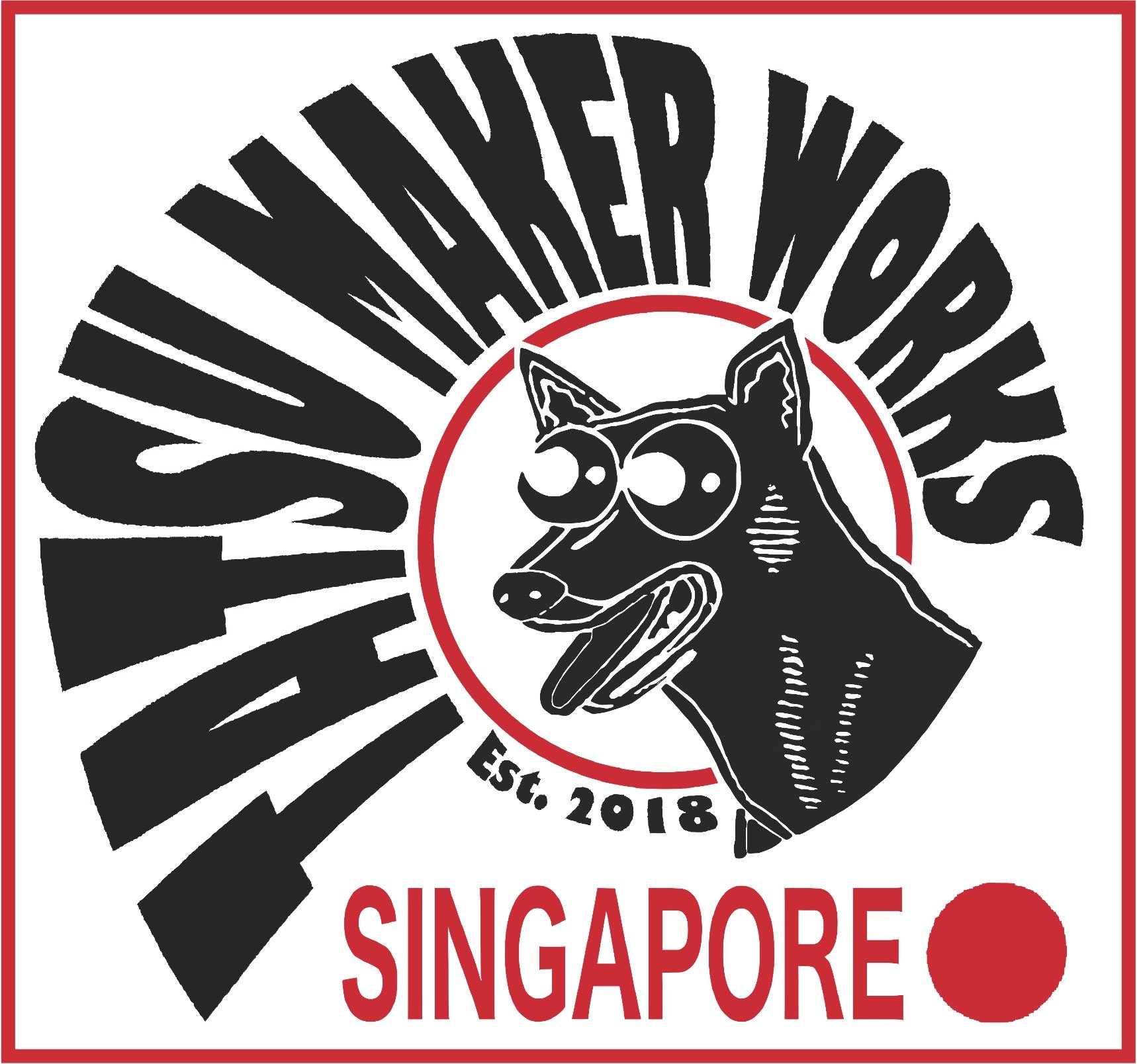ABOUT THE ART
All Tatsu Maker Works apparel designs are taken from my original art, available from numbered editions of linocut prints created in our studio. Linocut is an old-school style of printmaking involving lots of carving, lots of care, and a whole lot of time.
I’ll demystify the process that goes from spotting a cultural gem on the street to creating a work of art for your home.
Capturing the image
After selecting a location based on what iconic Singapore food I want to celebrate, understanding the spot as a great example, and liking the overall look of the place, I’ll take a ton of reference photos to get the composition I like that shows them off and features people engaging in the course of business.
Creating a digital design
On my iPad and using Procreate, I’ll develop a digital design for my final image. Procreate allows me to develop my design in layers so I can plan how and where I’ll use color, as well as what colors will be used on each layer I print.
Transferring to the printing plate
I’ll then reverse the digital image (because everything you print is in reverse) and transfer the image a layer at a time to the printing plate; I use Japanese vinyl made for this purpose. I’ll go to the copyshop with my separate layer files to print them up, align the prints to my printing plate, slide a sheet of red carbon paper in between, and tape it all down to trace over all the lines I want to carve. This leaves my single print layer image on the printing plate in red
Prepping for carving
Once the red lines are down I’ll go over them with a black ink pen so I can see what I have to carve without smearing the image.
Carving the plate
With a host of knives of various sizes and shapes, and under a magnifying glass, the carving begins. The most detailed of the plates can take up to two weeks to complete for a plate 40x30cm. If there’s a mistake…there’s no undo button.
Printing
Image layers are printed one at a time. Each printing plate will be one or two (or sometimes more) colors. The plate goes on my press, ink is rolled, and the paper goes on top to transfer that plate’s image.
Building the image
Printing each plate builds up the image on the paper one (or more) colors at a time. The image on the right is after printing the first two layers, the image on the left is a test print for the third (and final) layer. I print on Awagami Bamboo Select hand-made washi, 170g, made from 70% Bamboo / 30% Recycled Pulp. I love the whiteness, opacity, and flexibility.
Drying the layers
Depending the colors and inks printed, the paper will need to dry for a number of days between each layer so that new ink can sit atop old ink properly.
The final print
Once all layers are printed and properly dried, we have a finished print! I’ll sign and number each from here and they are ready to go.










